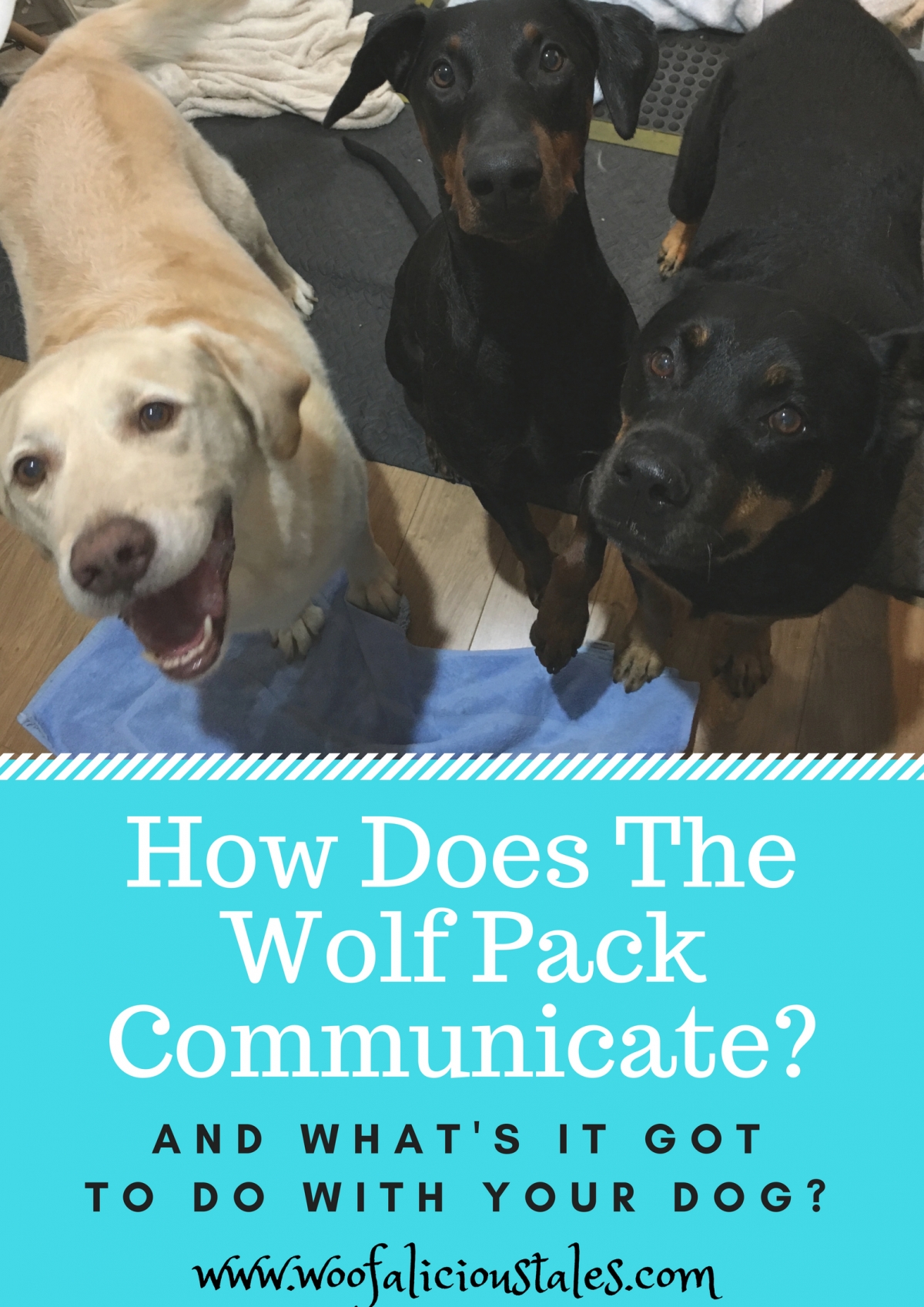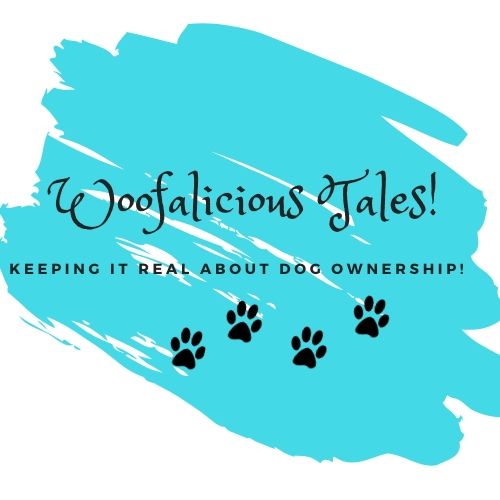
Hey Woofa’s,
Last week’s post on how the Wolf Pack communicate took longer than what I expected!
I was meant to cover all four ways in the one post, boy did that get blown away!
In case you aren’t aware, I’m looking into The Wolf Pack as a means of understanding how our dog’s communicate with us!
So far I’ve covered –
How Does the Wolf Pack Communicate
In Review
In How Does The Wolf Pack Communicate I mentioned four different ways but only managed to cover one.
The FOUR ways the Wolf Pack communicate are:-
- Energy
- Scenting
- Vocal Behaviour
- Body Language
No smart phones necessary here!!
The Pack understands the Leader through these forms of communication.
We spoke extensively about how Wolves (& all animals) use energy to communicate and how our energy impacts our dogs.
This week I endeavour to cover the rest of the ways Wolves communicate and how we can relate that to our dogs.
SCENTING!
Wolves have an amazing sense of smell (a gazillion times better than ours)!
Wolves use smelling and urinating aka scenting, as another means of communication.
They scent-mark (urinate) around the parameters of their Pack’s territory to ward off unwanted visitors. Also to allow pack members to know where their territory is.
They use scent to claim their kill (food) and to find it once it has been hidden.
Scent is also used as their inbound GPS system.
Wolves put out pheromones in their feet, tails, eyes, anus, genitalia and skin. This helps pack mates identify each other, and their Leader. It also helps the Leader to identify when his female is ready to mate and to produce offspring etc.
Because of their strength in smell they can smell food and predators from miles away.
WHAT’S THIS GOT TO DO WITH MY DOG?
Last year I wrote a post on Our Dog’s Sense of Smell it mentions that we have about 1 million receptors in our nose and dogs have around 600million!!!!!!
Needless to say their sense of smell is one of their strongest senses as well.
Your dog is going to sniff another dog’s genitals (and you can cringe all you like) but this is how they gather information about the other dog. Your dog will even sometimes sniff the genitals of guests and people they meet. It’s their equivalent of a handshake and information gathering (their version of Facebook stalking).
When your dog goes to the toilet and they do that little scuffy dance that flicks the dirt and grass over it, that’s them scenting. To let others know that’s their pooh!
When your dog wants to pee on everything in the yard, they are definitely marking their territory. Even out on a walk when they pee all the time, they’re scent marking. Marking their much larger territory.
i.e – If they ever got out and had to make their way home they could smell their way home from their urine on all the shrubs/trees they’ve peed on while out on a walk.
Your dog will want to sniff while out as well because they are picking up soooooooooo many smells we’re not even aware of.
Sometimes on windy days dogs can find it overwhelming because it sends their noses into a frenzy.
Have you ever watched your dog’s nose when they’re sniffing the air? It’s registering a gazillion different smells that we’re not even aware of. Reminds me of Samatha’s nose from the show Bewitched!!!
Just as their ancestors did dogs can smell fear in others and in this day and age studies have shown they can smell illness.
Dog’s noses are also used in a wide variety of different professions.
To put it mildly our dog’s sense of smell is extraordinary.
We may yell at them for marking all the time and wanting to sniff everything but it’s their way of communicating with the environment and other animals that have come that way.
Our dogs can pick up smells on us that we’re not even aware we put out. When we experience an emotion we express a smell only our dogs can pick up on.
Through smell dogs can warn us against any dangers. When the house over the back of us was burning down I had no idea only that Billy was madly scratching at the back door. It wasn’t until I actually had a look that I realised what was happening!!!!
VOCAL BEHAVIOUR!
Vocal communication amongst wolves is mainly through – howling, growling, whining and barking!
- Howling – is used to communicate to other pack members over long distances, to ward intruders away and to claim territory.
- Growling – generally conveys aggression and warning.
- Whining – is usually done by the Pack Leader’s Mate to her pups or from her pups.
- Barking – is generally used as a warning.
HOW DOES THIS RELATE TO MY DOG?
As we’re all well aware most of our dogs use vocal cues to get our attention.
Just as a baby might have a hungry cry, a dirty nappy cry, a whining cry etc dogs have different kinds of barks and vocal cues for us to be aware of.
Most dogs will use a version of howling – it might be a half bark that’s drawn out and we consider it talking. I do know a few Huskies that howl in the bath, and a few dogs that howl when they hear sirens!
Majority of the Staffies we have owned have all had their own version of Staffy talking.
Billy gets his happening when he wants to play.
Growling in our dogs – will either come in the form of a warning which could lead to aggression if the warning is ignored, or as play growling with another dog.
Billy gets his play growl on when he’s playing tug-o-war or if he wants you to chase him to get the ball.
Whining is usually done – by puppies, when your dog is trying to show you something or point your attention to something. For Example – open the door for them to go out to the toilet.
Billy’s whining is when his ball has gone somewhere where he can’t get it, he’ll stand where it is and whine. Or if he wants us to open a door for him.
Barking – is probably the most common form of vocal behaviour our dogs display today. Again it can range from a play bark right through to a down right aggressive bark.
It’s important to become familiar with the different types of vocal behaviour your dog is showing. It may be a bit of trial and error for a little while but before too long you will learn the difference.
WHAT DOES THIS MEAN?
Thanks to their ancestors the Wolves, our dogs have an amazing sense of smell. Something we’re never going to be able to come close to comprehending.
Our dogs use scenting as a means of communication with other dogs, other animals, and with us.
They learn about their surroundings through scenting/smelling and they can warn us of any dangers.
Our emotions never lie, we can hide them to others but our dogs will always smell our emotions.
Dogs also communicate with us through vocal behaviour. By learning your dog’s different vocal cues, as you would a babies different cries, you will learn to understand your dog more.
Looks like I’ve run out of space again!!! There’s so much to say.
Stay tuned for next week’s Blog Post on Body Language!
In The Comments Below – Billy and I would love to know how your dog communicates with you through their sense of smell.
What vocal cues is your dog good at communicating with you?
Cheers

Related Posts
Dogs Will Be Dogs – It’s That Simple!!
Hey Woofa’s, I was speaking with a customer the other day and she…
20 July 2018How Does The Wolf Pack Communicate?
Hey Woofa’s, Last week’s post on how the Wolf Pack communicate…
20 July 2018



Leave A Comment